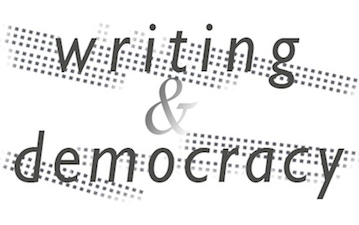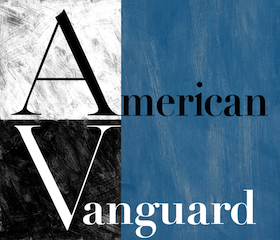Nichi Bei Times Contributor
Recently I had the happy surprise of uncovering the “double life” of a remarkable Nisei. It was not that he had a secret identity, like one of those spies who appear to lead tranquil suburban lives. It was simply that he moved from one field of endeavor, political activism and journalism, to another, theater and movies, and in the process changed his name.
Still, the upshot was that K. Conrad Hamanaka and Conrad Yama, two Japanese Americans whose very different work I admired, were in fact the same man.
Fresno-Born Conscientious Objector
Kiyoshi Hamanaka was born in Fresno, California in 1919. After attending Fresno High School, he enrolled at Fresno State College, where he majored in speech and psychology, and became interested in acting.
Inspired by his reading of Tolstoy, he absorbed himself in socialist and pacifist ideas (he took the English name Conrad because it sounded like “comrade”).
In July 1941, Hamanaka was called under Selective Service. He asked to be excused as a conscientious objector, stating that he did not believe in using “arms to kill human beings to solve world problems.” His request was refused, and he was sent to Jefferson Barracks, Missouri, and confined in the stockade.
As the sole Nisei C.O., Hamanaka’s stand was not well received by Japanese Americans desperate to prove the group’s loyalty. Issei leaders pleaded with him to withdraw his opposition to military service, and he was informed that his mother was suffering from his actions. To resolve the situation, he agreed to a compromise, and accepted induction in a noncombatant role as a medic.
After serving seven months, he was released on February 12, 1942, and immediately returned to Fresno State. However, a week later Executive Order 9066 was issued. Hamanaka was forced to repack his bags and move with his family to the Fresno Assembly Center.
At Fresno, Hamanaka threw himself into activity. He taught drama classes, acted as scoutmaster, and organized discussion forums for adults. He also ran membership drives for the ACLU.
Camp Newspaper Editor
After being named editor of the inmate newspaper, the Fresno Grapevine, Hamanaka stood up for free speech. When a talk by an outside speaker was banned and editorials were censored, he ran the newspaper with black boxes where the excised stories would have been, and sent on the censored stories and speech text to outside supporters, notably Socialist leader Norman Thomas and ACLU attorney Ernest Besig (Assistant Secretary of War John McCloy denied that there even was a Fresno Grapevine, whereupon Thomas sent him the evidence!).
Perhaps in retaliation, government officials separated Hamanaka from his family and sent him to the Jerome camp. (He also allegedly quarreled with his family, who objected to his dating an “eta” or “burakumin” woman). At Jerome, Hamanaka was named editor of the camp newspaper Denson Tribune.
After registration was imposed on inmates, Hamanaka felt a dilemma. He was loyal and wished to leave camp, but he felt that his status as a conscientious objector meant his allegiance was by definition qualified, so the only honest response to Questions 27 and 28 was “no.”
Although Hamanaka avoided being sent to Tule Lake, he languished in Jerome for a year, during which he had multiple leave clearance hearings (one examiner offended him by asking repeatedly why he was not a Christian). He met a woman in camp, with whom he fathered a child. Meanwhile, with editorial help from Norman Thomas, he drafted an article on Japanese Americans and the “loyalty” question. He criticized the questionnaires as meaningless and punitive, noting that the provisions asking Nisei to “foreswear allegiance” to Japan presupposed that they had a previous allegiance. Thomas tried, without success, to place the article with various magazines. (A version of the text ran in The Pacific Citizen in 1945).
In December 1943, after Hamanaka received an official discharge from the Army, he decided to bring suit against the government, at which point he was promised a leave permit. He applied to the University of Chicago to pursue a degree in psychology, and was accepted. However, the promised permit was held up through administrative means, despite repeated efforts by Ernest Besig to push the War Relocation Authority (WRA).
In May 1944, he suddenly received notification of leave clearance. It is conceivable that officials intended to trap him, since as soon as Hamanaka and his new wife arrived in Chicago he was arrested for draft evasion — government lawyers insisted that his C.O. status and discharge had been wiped out by the reinstitution of conscription on Nisei. It was only after heroic efforts by Besig and intervention by WRA director Dillon Myer that he was freed.
In the years that followed, Hamanaka moved to New York, where he attended the New School and immersed himself in Manhattan intellectual and bohemian circles (according to his family, Hamanaka was close to the circle of Beat writer Jack Kerouac, and may have provided one model for Kerouac’s Japanese characters).
He had two daughters, Lionelle and Sheila. (Sheila Hamanaka has become a notable author/illustrator of children’s books on Japanese Americans and other subjects).
From Hamanaka to Yama
At length Hamanaka decided to become a professional actor, and took the name Conrad Yama. In 1958 Yama received his first break when he was cast in the original production of Rogers and Hammerstein’s musical “Flower Drum Song.” He received glowing reviews for his performance as Dr. Li, the immigrant Chinese father of Miyoshi Umeki’s heroine. He remained with the play throughout its Broadway run, and continued in touring productions thereafter.
His next years were less successful, although Yama had guest shots on “The Naked City” and “The Patty Duke Show.” In 1964 he opened on Broadway as a Coney Island concessionaire in the short-lived musical “I Had a Ball,” starring Buddy Hackett. (An early experiment in racially integrated theater, the play featured a multiethnic cast directed by an African American, Lloyd Richards).
In 1968, Yama scored a notable coup. Based on his resemblance to Mao Zedong, he was cast as Mao in Edward Albee’s avant-garde play “Box-Mao-Box,” which premiered in Buffalo and opened on Broadway in October. As a result, he was cast to portray Mao in the film “The Chairman.” Although the film, a rather silly thriller with Gregory Peck as an American scientist spying in China, was not a success, Yama was hailed for his performance — and even was hired to portray Mao by advertising agencies!
He played a similar role in “The Virgin President,” as a Chinese prime minister. (His real-life daughter Lionelle portrayed the character’s daughter). Yama’s work soon led to his casting in other movies, including “Midway,” “The King of Marvin Gardens” and “The Taking of Pelham One, Two, Three” (he even had a bit part in “The Godfather,” as a fruit seller!).
He likewise continued his theater work. In 1974, Yama starred opposite Pat Suzuki in Frank Chin’s “Year of the Dragon” at the American Place Theatre, playing Pa, a domineering Chinese patriarch who speaks English with luscious malapropisms and refuses to understand Caucasians. He repeated the role in a TV production in 1975, with George Takei as his son. Yama returned to Broadway in Steven Sondheim’s “Pacific Overtures” in 1976, and provided comic relief as a Burmese Ambassador in David Hare’s off-Broadway drama “Plenty” in 1982.
Conrad Yama has been retired for many years. He lives in New York.
Greg Robinson, Ph.D., the author of “By Order of the President: FDR and the Internment of Japanese Americans,” is an associate professor of history at the Universite de Quebec a Montreal. He can be reached via e-mail at robinson.greg(at)uqam(dot)ca.

